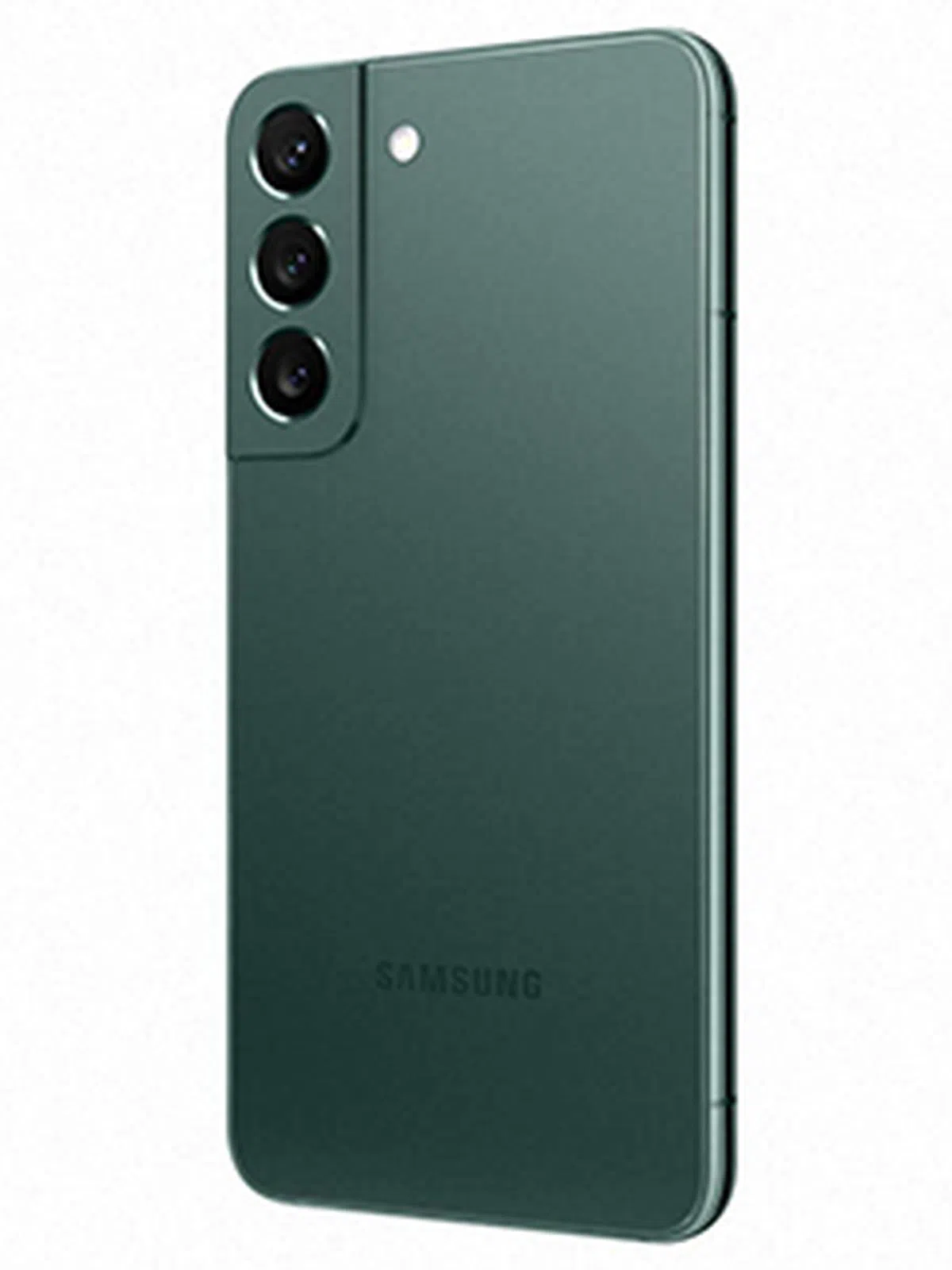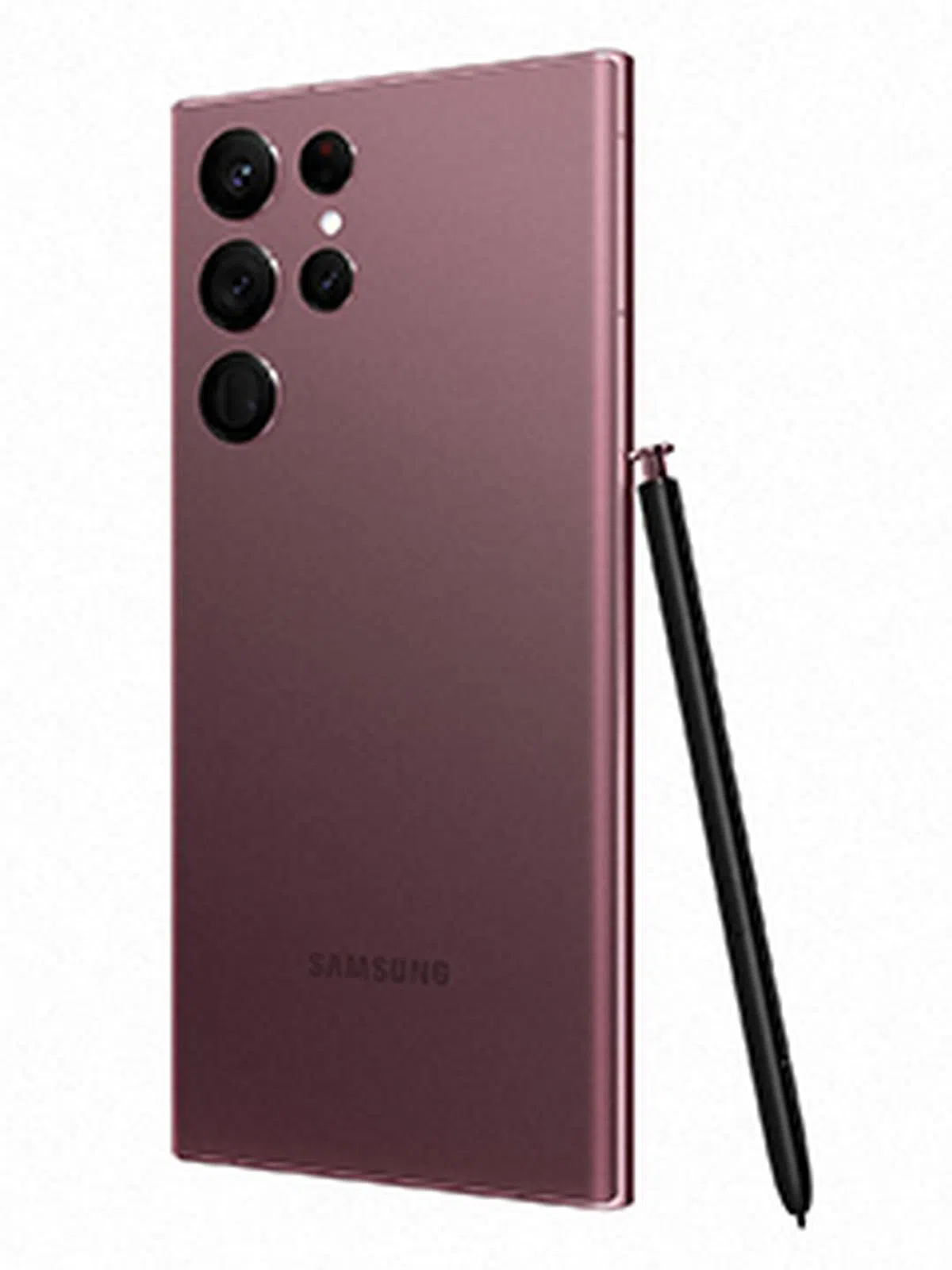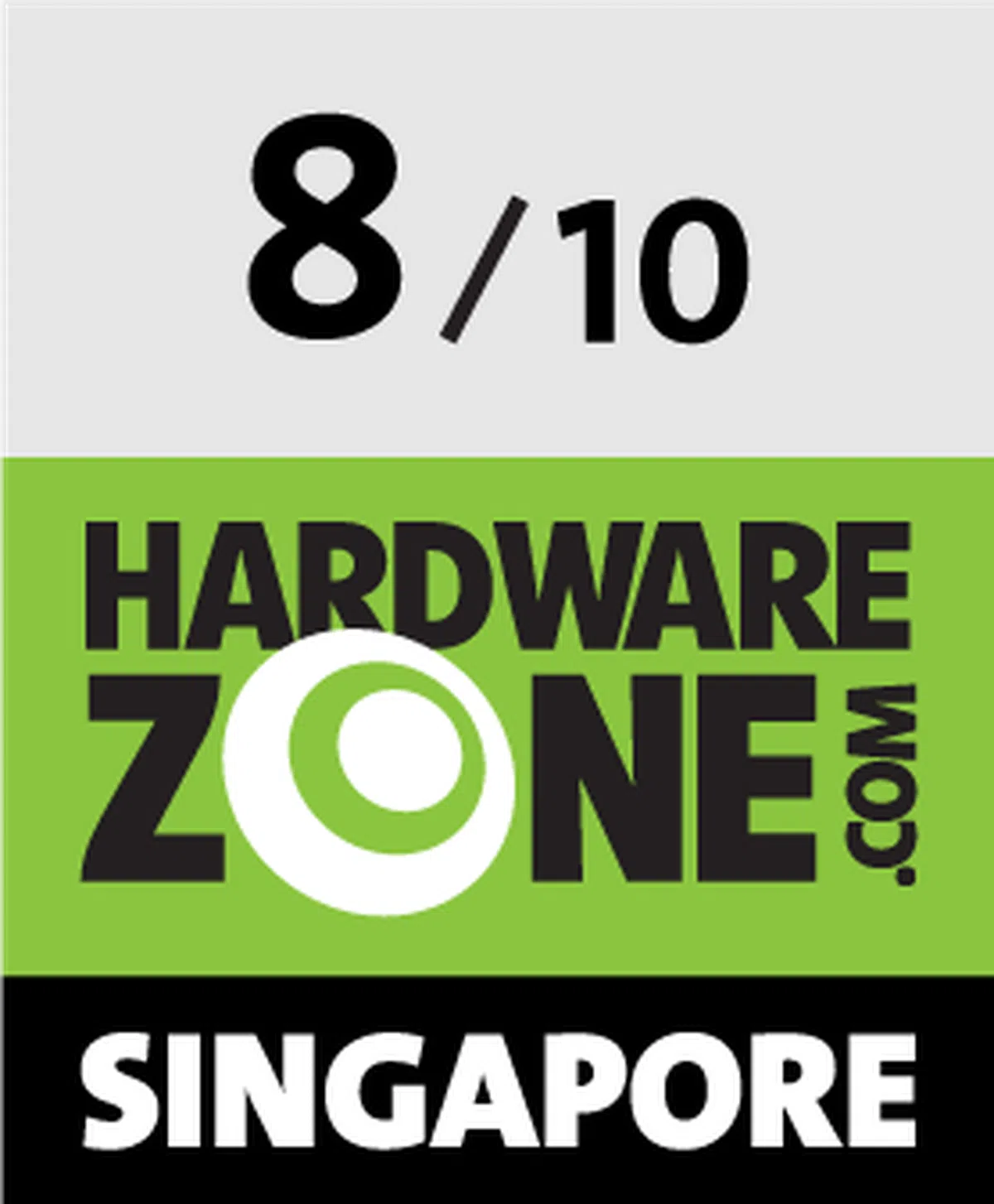Samsung Galaxy S22, S22+, and S22 Ultra review: A slot more superior
Is the Samsung Galaxy S22 series worth the upgrade? Is the S Pen going back into its rightful slot such a big deal? How do they hold up against the many flagships phone out there and Samsung itself? Let’s find out.
By Liu Hongzuo -
Note: The article was originally published on 21st February 2022 and the phones are now available in all retail touchpoints.

Samsung Galaxy S22 series (L to R: Galaxy S22 Ultra, S22+, S22).
Slotting the S Pen back in
Samsung's yearly Galaxy S refresh has arrived, but some changes to this year's Galaxy S22 series phones are anything but typical.
The Korean firm brought in its Qualcomm variants instead of its usual Exynos fare for our market. That means that the Singapore versions of Galaxy S22, S22+, and S22 Ultra come with a Qualcomm Snapdragon 8 Gen 1 processor inside.
Another shocker is the reintroduction of the S Pen on the Galaxy S22 Ultra, with the stylus actually tucked neatly in the device's built-in slot. We're not sure why Samsung made it a separate feature for its predecessor, but we're glad it steered away from that decision in just one generation.

The Samsung Galaxy S22 series also sees other minor upgrades. For example, the S22+ and Ultra now get 45W fast-charging, and all three phones are given a new photography trick: Nightography (which we'll go into detail later).
Is the Samsung Galaxy S22 series worth the upgrade? Is the S Pen going back into its rightful slot on the Ultra such a big deal? How do they hold up against the many flagship phones out there, even those by Samsung itself? Let’s find out. But if you're all ready for the upgrade, head over here for all the pricing, retailer links and offers.
Design and Handling

Let’s be real, if you’ve seen the Samsung Galaxy S21 series, the Galaxy S22 and S22+ should hold no surprises for you. Similarly, if you’ve caressed a Galaxy Note20 Ultra in your hands before, the Galaxy S22 Ultra would look and feel similar.

Oh look, is that the... S21 without two-toned colours?
Galaxy S22 and S22+ recycled the Contour Cut rear design that debuted on the Galaxy S21 series handsets. It’s a raised, metal camera housing with a high-polish chamfered edge that meets the hazy, ultra-thin glass-covered back. These phones also have rounded corners and a similar matte pastel finish to top off Samsung’s familiar flagship style for the mass market.

Is that... a Galaxy Note?
Being wild with Galaxy S22 Ultra probably wasn’t an option either, given that Samsung decided to stick the S Pen back into the phone. So, you'll get high-polish, flat aluminium rims along the top and bottom of the device, paired with sides that curve like a waterfall. It’s a throwback to the Galaxy Note, where they've adopted the same design language to accommodate the S Pen.

Incidentally, this means that folks who like the non-Ultra's design would miss out; you can shake your fists at Galaxy Note fans for the flat ends. For us, we liked the differences, since it creates a familiar yet distinct separation between Ultra and the rest of the range.

To give it a little more personality, Samsung redesigned the S22 Ultra’s camera housing with individual camera cut-outs at the back (Note20 Ultra had a traditional raised camera housing behind). They’re neatly arranged, well spaced-out, and uniformly sized (three big, two small), which tells us Samsung still paid attention to detail even when moving to a fresher look.

Despite the different tiers offered, all three Samsung Galaxy S22 series phones have Armour Aluminium frames (first introduced in Galaxy Z Fold3 and Z Flip3), Corning’s Gorilla Glass Victus+, and are IP68-certified against dust and water. You’re not getting any major differences in build quality when picking between the three models.
Our only gripe is how Samsung made the built-in S Pen slot a big deal for the Galaxy S22 Ultra. Nearly everyone and their mums knew Samsung had the expertise to do so for half a decade; it was really a matter of time since the Galaxy Note series bowed out of the market. Still, it’s nice of Samsung to finally acknowledge the Note’s spiritual successor in a proper way.
Display and Audio

Samsung Galaxy S22 Ultra.
The Galaxy S22 Ultra packs a 6.8-inch Edge Quad HD+ (1440p) Dynamic AMOLED 2X display. This means that the phone comes with an AMOLED panel, has curved sides (instead of a flat screen), and can support HDR10+ content. The Ultra’s panel has an adaptive 120Hz refresh rate and 240Hz touch sampling rate in Game Mode. What’s new is the peak 1,750-nits brightness – it was truly helpful in helping us see our display’s content better under the sun during midday, but you’ll probably not trigger the feature often if you stay mostly indoors.
The Galaxy S22 Ultra has its display resolution set to FHD+ (1080p) by default though. You’ll need to manually enable WQHD+ (1440p) if you wish to maximise fidelity at the cost of battery uptime.

Samsung Galaxy S22+.
The Galaxy S22+ comes pretty close in size with its 6.6-inch FHD+ Dynamic AMOLED 2X display. It’s a flat panel unlike the Ultra, and it maxes out at 1080p. However, S22+’s display retains all the other perks such as HDR10+ support, 120Hz adaptive refresh rate, 240Hz touch sampling rate, and 1,750-nits peak brightness.

Finally, you have the 6.1-inch FHD+ Dynamic AMOLED 2X display on the vanilla Galaxy S22. It only has 1,300-nits peak brightness unlike its souped-up siblings, but that's still sufficient for viewing content under direct sunlight. This phone’s display still shares all the other panel perks found on its Plus and Ultra variants.

Samsung Galaxy S22+ (Left Top), Galaxy S22 Ultra (Left Bottom), Galaxy S22 (Right). Video clip is a 1440p60FPS HDR footage of a Netherlands flower field, viewed indoors.
The differences between non-Ultras’ 1080p and Ultra’s 1440p are only noticeable if you have both devices playing the same content side by side (we tried with a 1440p, 60 FPS HDR streamed clip). Otherwise, the S22 and S22+ also offers a similar, high-quality visual experience – albeit on a slightly smaller panel.
If you’ve noticed, the S22+ and S22 have a minimum refresh rate of 48Hz, unlike the 1Hz refresh rate on the S22 Ultra. Tech publications like Notebookcheck noted that the non-Ultra variants use LTPS backplanes (instead of LTPO) for the AMOLED display. To the average consumer, this means that you might save some battery when the S22 Ultra shows a static image or text. In our experience, the backplane choices aren’t notable enough to make a difference during use – after all, when idle, your phone will likely turn the screen off anyway, while the majority of our daily browsing demands much more than 1Hz.

All three devices support stereo audio, where it uses the call speaker to double up and pair with the bottom loudspeaker. Audio quality is average across three devices – not terrible, but we’d rather use a pair of true wireless earbuds.
UI and Features

Much of the Galaxy S22 series One UI 4 interface isn’t very different from our Galaxy S21 FE experience. Also, the S22 and S22+ are standard flagship phones, so we tried the basics, like fingerprint unlocking, NFC, Bluetooth connectivity, Wi-Fi stability, etc. and found no major issues.

To say that the phones’ in-display fingerprint sensors are fast would be an understatement – it unlocks even before we could lift our thumbs off the screen, making it truly seamless in user experience. We also triple-checked its accuracy by borrowing thumbs from strangers and trying other unregistered fingers, so we’re certain the sensors are both secure and lightning-quick.

Finally, the Galaxy S22 Ultra’s S Pen functions just like how you'd expect it to on the traditional Galaxy Note. Pulling the stylus out of the built-in slot summons a menu of S Pen-friendly features, like Notes and Screen Write. You can also customise the menu to your liking and make it offer your most-used messaging apps too.

Typically, old S Pens that came with the Galaxy Note device had a barrel colour that followed the phone. For the Galaxy S22 Ultra’s S Pen, only the eject button shares the same hues, while the barrel takes on a matte black texture.

S Pen’s gamut of features are well-documented and too extensive to go into detail, so we’ll look at two new improvements that most users would likely encounter with the phone - reduced pen latency and improved handwriting-to-text conversion.

Samsung said that the Galaxy S22 Ultra has an upgraded Wacom IC (integrated circuit) component on top of AI-assisted multi-point algorithms for predicting stylus paths. This translates to an input delay of just 2.8ms (down from 9ms previously), making Galaxy S22 Ultra’s S Pen usage the fastest and most responsive iteration Samsung has thus far.
We remembered 9ms being plenty fast for normal use, so it’s not easy to tell if the Galaxy S22 Ultra's S Pen is faster from typical usage alone, but it definitely exceeds most average user's stylus requirements for daily note-taking. The true bottleneck to its response time is your own writing speed and penmanship. Speaking of ugly handwriting…



... Samsung’s improved handwriting-to-text functionality in Samsung Notes is almost like black magic, as shown from the samples above. Do you have a doctor’s handwriting? Do your words look like chicken scrawls? Don’t worry, the Galaxy S22 Ultra can handle it.


It’s only limited in its supported languages (we couldn’t get it to convert handwritten Simplified Chinese or Korean despite downloading and enabling it in Settings for example). Words also need to be written horizontally, from left to right, for the phone to understand too (as seen above).

We really liked how the S22 Ultra notifies you if you left the S Pen behind after using it – it’s a nice touch, and no, we didn’t lose ours. Thanks, Samsung.

Imaging Performance
If you’re familiar with the S21 series, you’d notice that the biggest camera differences lie in the Galaxy S22 and S22+s’ main camera, touting a 23% bigger sensor for capturing even more light.
While it’s likely that the Galaxy S22 Ultra also improved from its predecessor, we know that the 108MP main shooter still shares the same megapixel count and same pixel size on the sensor, so the leap between generations isn’t as great as the S22/S22+.
Beyond these adjusted specs, the Galaxy S22 series camera capabilities largely follows that of the preceding S21. Here are the details and sample images.
Samsung Galaxy S22 | Samsung Galaxy S22+ | Samsung Galaxy S22 Ultra | |
Back |
|
| |
Front | 10MP, f/2.2, portrait, 1.22µm, Dual Pixel PDAF | 40MP, f/2.2, portrait, 0.7µm, PDAF |
Samsung Galaxy S22 Ultra

Main camera.

Main camera.

Ultra-wide.

3x Zoom.

10x Zoom.

100x Space Zoom.

Main camera.
Before we give our opinion, let's look at how the non-Ultra variants fare too.
Samsung Galaxy S22+

Main camera.

Main camera.

Ultra-wide.

3x Zoom.

30x Space Zoom.

Main camera.
Samsung Galaxy S22

Main camera.

Main camera.

Ultra-wide.

3x Space Zoom.

30x Space Zoom.

Main camera.
Across the three phones, we spot aggressive colourisation (hint: look at the blue skies in each photo, and how they handle different shades of yellow) and slight issues with handling overexposure. Beyond these quirks, the S22 series can generally capture great detail with low noise. Space Zoom still remains largely impractical for general use, even though it's impressive for a phone.
“Nightography”, for doing it in the dark

Nightography, Samsung Galaxy S22 Ultra. The moon was particularly orange that evening (a sign of air pollution).
An improved imaging feature Samsung boasted about during its Unpacked keynote announcement is Nightography, available on all three models of the Galaxy S22 series. According to Samsung, the phones automatically detect low-light situations and take multiple still shots of your subject and image with a single press of the shutter. The chipset’s NPU automatically combines the best shots from its spread (choosing from different exposure levels, etc.) to ‘stack’ and develop a final, ideal image that goes into your Gallery app.
Nightography, in essence, sounds as similar to many phone's dedicated night modes, as far back as the Google Pixel's first Night Sight function in 2018, Huawei's P30 Pro Night Vision, and as current as modern iPhone’s Night Mode feature, which pulls similar tricks to present a clearer low-light photo. In Samsung’s case, you’ll need to enable it by going to the default Camera app, selecting “More”, and selecting “Night” to get Nightography.

Samsung Galaxy S22 Ultra in normal camera mode (No Nightography).
So, here are some sample shots for reference too. The above image (for comparison) comes from S22 Ultra's main camera, minus the Nightography feature. This might help you appreciate the differences it has when using the brand's dedicated low-light feature. Note that these images were shot by hand, with zero assistance from stabilisers or tripods.
Samsung Galaxy S22 Ultra

With Nightography.
The street lamp lights in the top left corner help to characterise what Nightography is about. In the still image without Nightography, the S22 Ultra couldn't capture the details inside the lights with overblown exposure. Stacking different exposures through Nightography brought out the bulbs lurking within. There's also more nuance among the differently-shaded tiles that line the paved street.


Samsung Galaxy S22+



Samsung Galaxy S22



Benchmark Performance
Singapore’s Galaxy S22 series devices will feature Qualcomm’s Snapdragon 8 Gen 1 chipset this time around, while the Exynos 2200 variants will go to territories like Europe and the UK.
Since, it's the first S8G1 phones to arrive in Singapore, we’ll pit them against last year’s flagships for a better understanding of the gains we'll be getting both with Samsung's new phones, and Qualcomm's latest.
The S22 series’ benchmark numbers you see below are averages taken from repeated, sequential testing to emulate high-performance output over a sustained period of time (as with all phones that are tested in our labs).
JetStream 2.0
JetStream 2 is a combination of a variety of JavaScript and Web Assembly benchmarks, including benchmarks that came before like SunSpider and Octane. It primarily tests for a system’s and browser’s ability in delivering a good web experience. It runs a total of 64 subtests, each weighted equally, with multiple iterations, and takes the geometric mean to compute the overall score. The higher the score, the better.

Geekbench 5
Geekbench CPU is a cross-platform processor benchmark that tests both single-core and multi-core performance with workloads that simulate real-world usage. Geekbench 5 scores are calibrated against a baseline score of 1000, which is the score of an Intel Core i3-8100. The higher the score, the better.

3DMark Wild Life (Unlimited)
3DMark Wild Life is a cross-platform benchmark for Windows, Android and Apple iOS for measuring GPU performance. Its graphics test consists of multiple scenes with variations in the amount of geometry, lights and post-processing effects, mirroring mobile games that are based on short bursts of intense activity. Wild Life uses the Vulkan graphics API on Windows PCs and Android devices. On iOS devices, it uses Metal.
In Unlimited mode, the benchmark runs offscreen using a fixed time step between frames. Unlimited mode renders exactly the same frames in every run on every device, regardless of resolution scaling. The higher the score, the better.

PCMark for Android - Work 3.0 and Storage 2.0
PCMark for Android is a benchmark for testing the performance of Android phones and tablets. The Work 3.0 test checks how the device handles common productivity tasks such as browsing the web, editing videos, working with documents and data, and editing photos. Storage 2.0 checks write-in and read-out performance for internal storage, external storage (if applicable), and SQLite database management. Together, the benchmarks can clue us in on how capable a phone is at handling everyday use. Work 3.0 scores are above, while Storage 2.0 scores are immediately below for each device - the higher the score, the better.
Since this is a newly introduced benchmark in our reviews, we’re building up our database of PCMark scores for Android phones.

Benchmark Performance Remarks
From the perspective of synthetic benchmarks, there’s no questioning of the peak performance of Snapdragon 8 Gen 1. It’s almost monstrous for an Android phone, with numbers surpassing Android devices that came before it. Performance is also rather consistent, with repeated scores coming close to previous results no matter which S22 variant we tried (likely Samsung’s work in optimising the chipset).
Our only gripes are limited to the physics that govern chipset usage – the smaller S22 obviously poses more heat management bottlenecks in reaching its maximum potential, while the bigger S22 Ultra has more room to dissipate heat even during use, which resulted in better numbers across the board.
Since we lack a phone with a 2022 flagship Exynos chipset, we can’t definitively say if the Snapdragon variants are “better”. But, the phone’s real-world usage is smooth, fast, and dreamy. An hour of mobile gaming with intense, maxed out graphics consumed 12% of the Galaxy S22 Ultra’s battery and it still wasn’t warm to the touch. But, take note these phones are brand-new and freshly out of the box.
Battery life
Our standard battery test for mobile phones has the following parameters:
- Looping a 720p video with screen brightness and volume at 100%
- Wi-Fi and Bluetooth connectivity turned on
- Constant data streaming through email

The increase in processing power would usually mean more battery drain. This is evident in the S22 Ultra, with its benchmark numbers anywhere between slightly to well above its predecessor. It's also worth noting that Exynos chipsets, when compared to Qualcomm's of the same tier, typically see 10-20% lower peak processing in favour of battery life. 40 minutes feels like a reasonable price to pay when we consider the difference in performance between the Ultra phone generations.
It took approximately 70 and 80 minutes for the Galaxy S22+ and Galaxy S22 Ultra to charge from 0% to 100% on a third-party 65W fast charger, respectively. These two phones have peak 45W fast-charging, so it's worth noting that buying an overspecced charger doesn't necessarily make the phones go quicker than their limit (we just used what was available that could help achieve these phones' peak).
The vanilla S22 only has 25W fast-charging, but its smaller 3,700mAh battery made it possible to reach full charge within 60 minutes.
Conclusion

The Samsung Galaxy S22 series devices mark a good start to what 2022 true flagship-grade Android smartphones will look like. They are operationally fluid, with amazing displays, impressive performance, touting reasonable uptimes for their respective sizes. Whichever model you choose, the Galaxy S22 series phones are generally a joy to use. They also set the bar to what this year’s phones should be – features intact, with high-quality hardware and software.
It also helps that its Nightography feature truly makes low-light shooting more accessible to more users, made sweeter by the fact that you get it no matter which S22 model you choose.

Galaxy S22 Ultra.
They may seem plain at first glance – if you aren’t a specifications chaser, upgrading from a Galaxy S21 series phone to an S22 or S22+ is a tough sell, and chucking the S Pen directly into its built-in slot was something the Galaxy S’s Ultra models should've done ever since it got S Pen compatibility. But, being plain is good for these devices: the S22 series, like its preceding flagship-grade mobiles, continue to deliver on high-quality and consistent user experiences with every handset refresh.
If you value the latest and greatest components, then you’d be happy to know that Samsung’s choice in bringing Qualcomm variants S22 series was the right one. The chipset’s performance (Snapdragon 8 Gen 1) met our expectations, and it was surprisingly efficient despite the power it put forth. Exynos variants of the past were nice, but they won’t be sorely missed even if Samsung's equivalent (Exynos 2200) proved to be even better, since the Qualcomm ones could take nearly everything we throw at it.

Galaxy S22.
A special mention goes to the vanilla Galaxy S22, where you get a true flagship phone at nearly budget flagship prices. If you’ve been following the scene, you’d have noticed how several Chinese Android smartphone brands put out ~S$1,000 budget flagship phones with compromises in different areas (from processor quality to missing or watered down basic features, like water resistance). The Galaxy S22 exists to keep these brands honest – if you can’t offer the full package like how Samsung does in the S22 for its price, you’ll have to try very hard to do something relevant yet interesting, to make it worth the user’s money.
There are minor grievances, of course – while it’s not a must, it’d be nice if we’d had access to the 1TB variant of the Galaxy S22 Ultra (not officially sold here), given how these phones lack a microSD card slot. Two, while fast-charging has gotten faster for the S22+ and Ultra, we’re still not getting a charging adapter in the box. If you pre-ordered the phones, you could at least plug that gap (or socket) with the bonus Samsung e-voucher by grabbing a Samsung fast-charger on your way out.

At S$1,178 (128GB Galaxy S22), S$1,468 (128GB Galaxy S22+), and S$1,858 (256GB Galaxy S22 Ultra), it’s good that Samsung kept the prices largely stagnant for new generation devices. These phones not only offer a complete package, but they are also good enough for Galaxy Z Fold3 / Z Flip3 / Galaxy S21 Ultra users to consider trading in if they want to return to a traditional smartphone user experience without losing flagship quality. For Galaxy Note fans who have been holding out, the Galaxy S22 Ultra finally marks a proper direct upgrade with the latest hardware and the most responsive S Pen ever.
If you're interested in these phones, you can learn more about getting one from our pricing and availability article here where we've listed all the retail options and launch offers.
Design | Features | User-friendliness | Performance | Value | Overall | |
 Samsung Galaxy S22
Samsung Galaxy S22 | 8.0 | 8.0 | 9.0 | 8.5 | 8.5 | |
 Samsung Galaxy S22+
Samsung Galaxy S22+ | 8.0 | 8.0 | 9.0 | 9.0 | 8.0 | |
 Samsung Galaxy S22 Ultra
Samsung Galaxy S22 Ultra | 8.5 | 8.5 | 9.0 | 8.5 | 8.0 |

